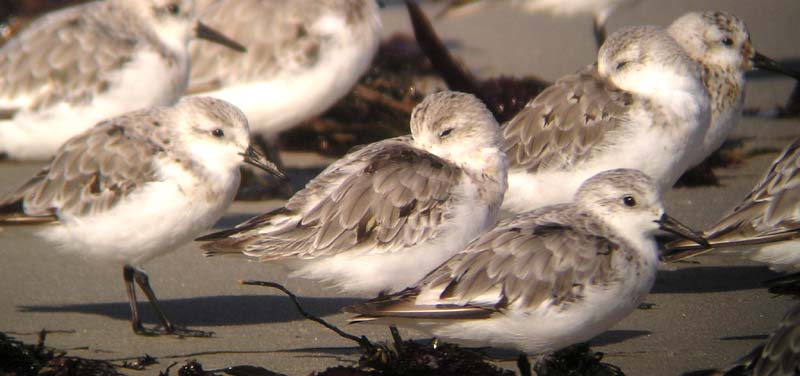 |
|
|
Sanderling in juvenal plumage Note the blackish-centered feathers to the back and scapulars which form little rows of triangles. This youngster arrived on the washed up kelp on the beach opposite Crespi Pond on 20 Sep and remained until at least 4 Oct. It showed no molt of any type during that period (note that even the top of the crown is finely streaked with black) and was a very striking bird. Because it did not show any molt during its stay, I presume it is headed toward wintering grounds far to the south. See also the black feathers on the leading edge of the wing, a feature that will remain throughout the winter. 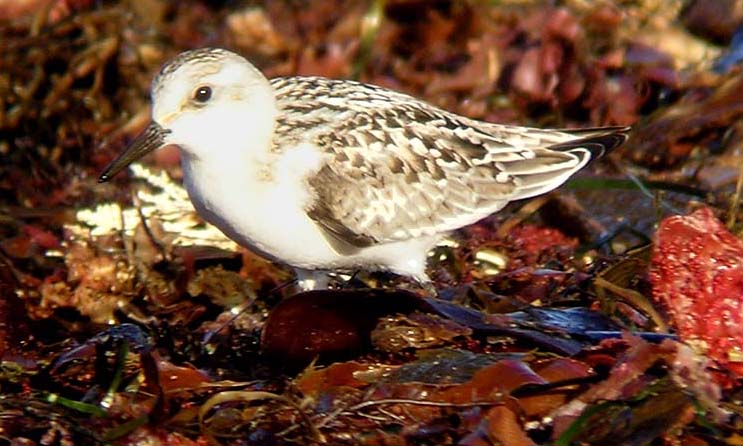 |
|
|
Sanderling molting from adult alternate to adult basic plumage It is not quite as nice a photo, but one can see the very worn coverts (typical of adults) and the very worn black feathers of the upperparts contrasting with nice new gray basic feathers appearing in the scapulars. The head and neck are in molt with just bits of retained rusty plumage left in those areas. 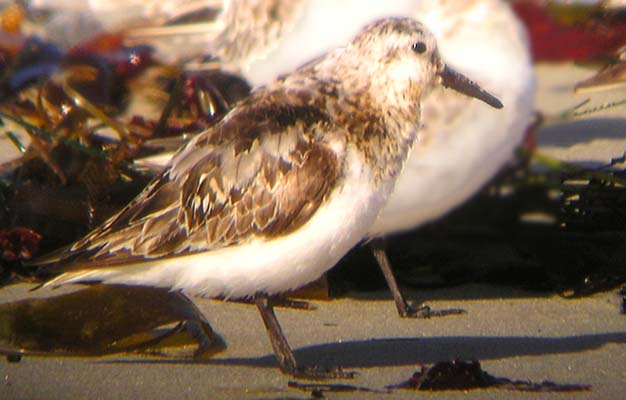 |
|
|
This Sanderling (below) was photographed on 1 Sep and it had already largely completed body molt. The head, neck, back, and scaps have mostly been replaced with fresh basic-plumaged feathers (pale sandy gray with thin shaft streak). But several scapular feathers and a couple back feathers are still retained from the previous plumage. These are very worn and have their whitish edges and tips already worn off. Are these the worn out adult alternate feathers, soon to be replaced? I think so. Look at the mostly black tertials on the adult (just above) compared to the rather pale gray and patterned tertials of a juvenal (two shots above). It think the tertials on the bird below are retained adult tertials, and thus this molting Sanderling is going from its alternate plumage to definitive basic plumage. It is thus an adult.  |
|
|
adult Sanderling in various states of pre-basic molt 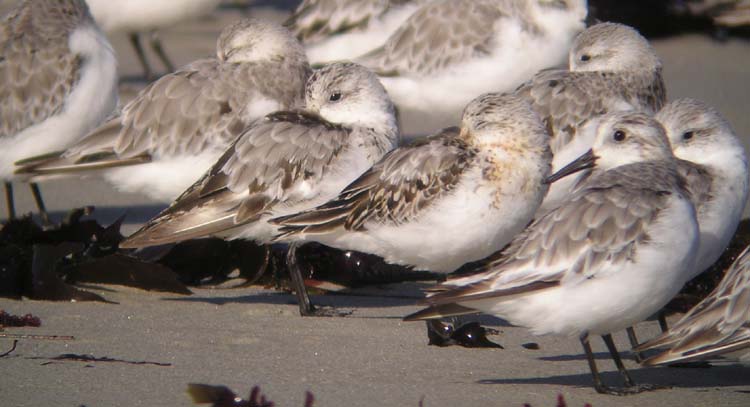 |
|
|
two adult Sanderling (in front) and one hatch-year bird (upper right), all well into pre-basic molt. I base this on the condition of the black-centered feathers that remain. In the two front birds, those feathers are very worn to nothing but black wedges, while the bird in upper right has obvious white spots at the tips of the black-centered feathers. Therefore I think that the white-tipped feathers are juvenal feathers, and this is a hatch-year bird. But I'm just playing with photos and could be wrong [comments welcome]. We can't see the coverts on any of these birds — those feathers might be more useful for ageing. 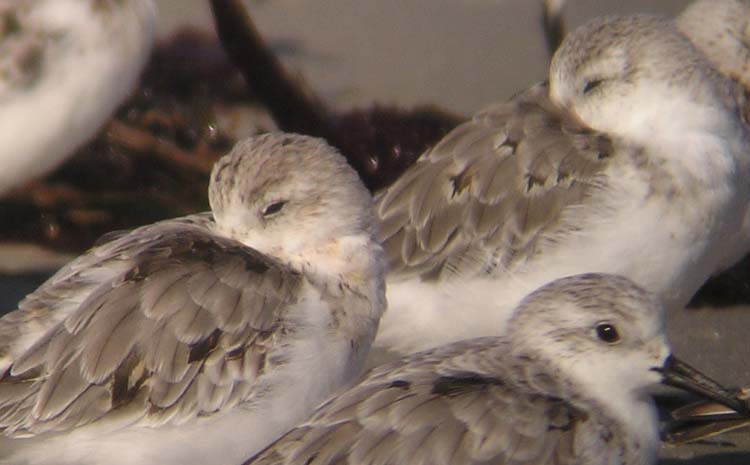 |
|
|
It is rare to see a snipe standing out in the open, and rarer still to have it stand there while its photo is taken, but here one is on 6 October. Using the criteria in Prater et al. (1977), I believe this is in fresh juvenal plumage because the row of median coverts all look to have a pattern like a 'bull's-eye.' That is, each feather has a white tip, then a black subterminal line, then a buffy band, then a blackish center, and all within a prominent shaft streak. Prater et al. (1977) warn that ageing snipe can be very difficult, and especially because the pale covert tips wear off quickly, but that the contrast is most noticeable on the American population [now split as Wilson's Snipe G. delicata] which is, of course, what we have here. 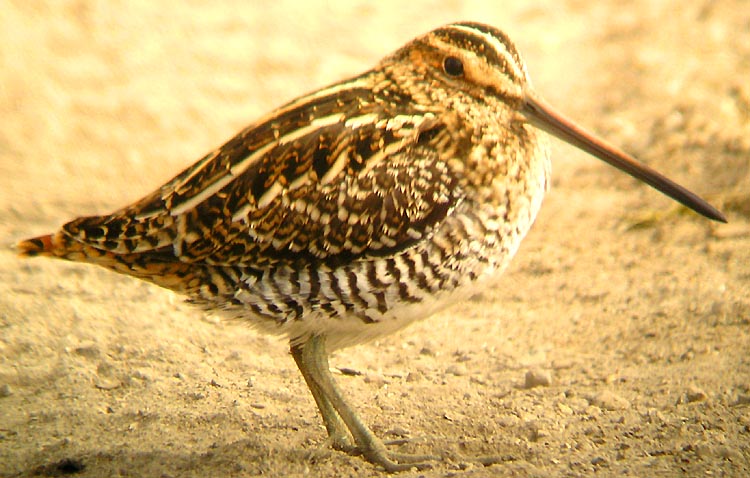 |
|
|
|
Literature cited:
Prater, A.J., J.H. Marchant, and J. Vuorinen. 1977. Guide to the identification and ageing of Holarctic waders. BTO Guide 17. British Trust for Ornithol., Tring, UK. |